FACE2FACE is a web-based service to analyse interfaces between biological macromolecules.
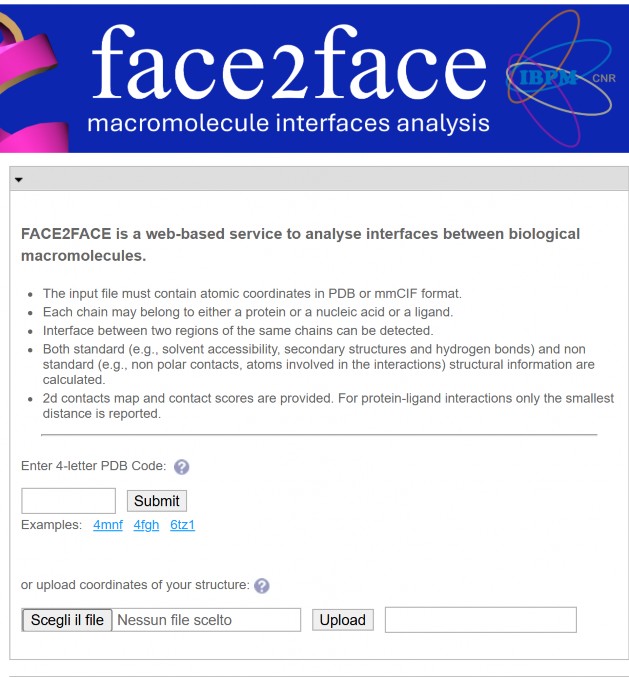
Enter the 4-letter PDB code for the selected structure to perform the interface analysis.
Alternatively, you can upload your own file in .pdb or .cif format.
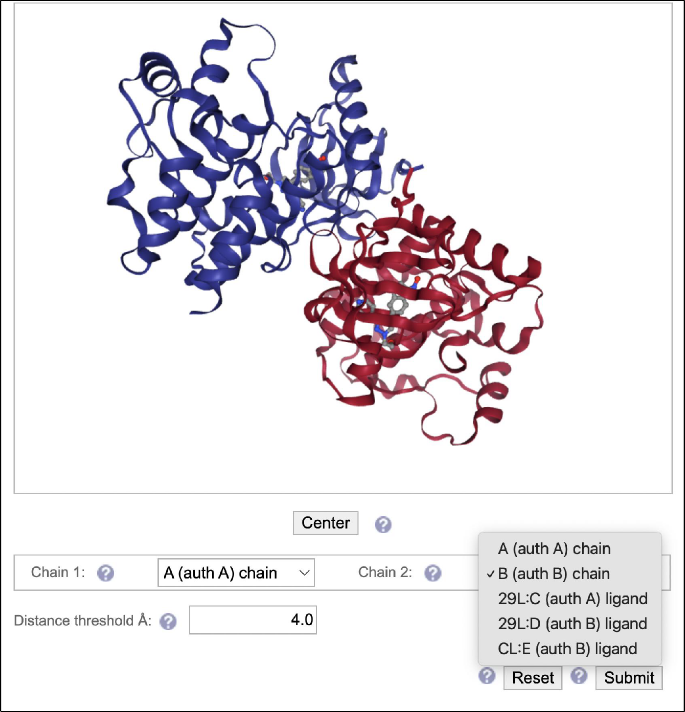
Select the two chains for which the interface calculation is desired.
It is also possible to select a chain and a ligand.
The upper box allows for the rapid visualization of the pdb chains.
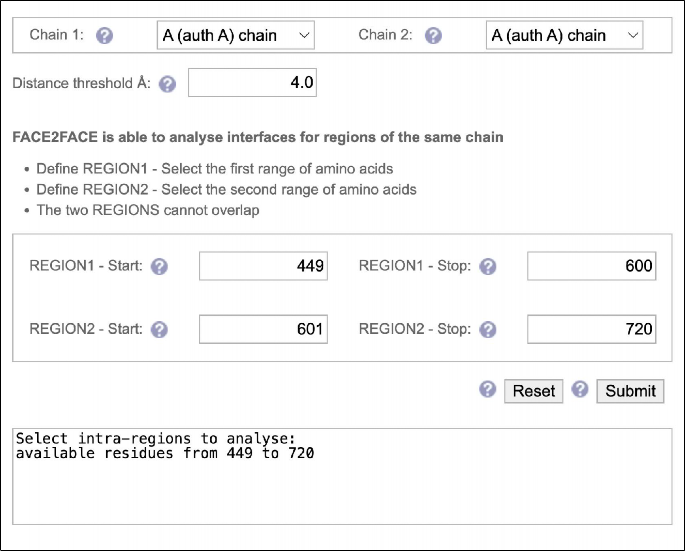
Different regions of the same chain can be selected. In this case, the range of amino acids for each region must be specified.
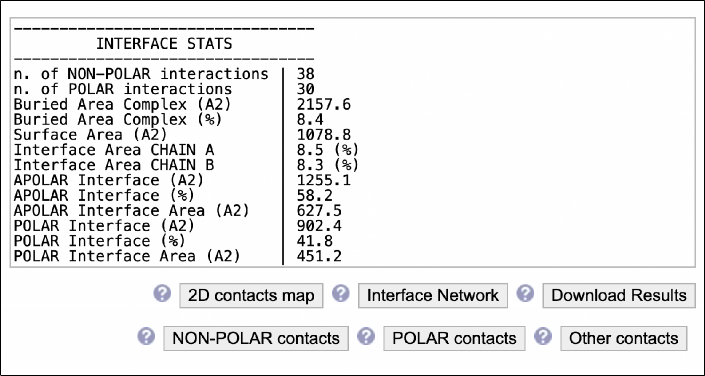
The output page includes a summary table of the interface statistics.
It is possible to download the results, visualize an interface network, or view the specific contact type table.
Contacts are classified in NON-POLAR, POLAR and Other.
Two atoms are considered in contact if their distance is less than a default threshold of 4.0 Å.
Contacts are classified as:
- Polar: Involving only N or O atoms.
- Non-polar: Involving only C or S atoms.
- Other: Involving one N or O atom and one C or S atom.
This classification is based solely on interatomic distance and atom type, without considering angles (Mizuguchi et al., 1998).
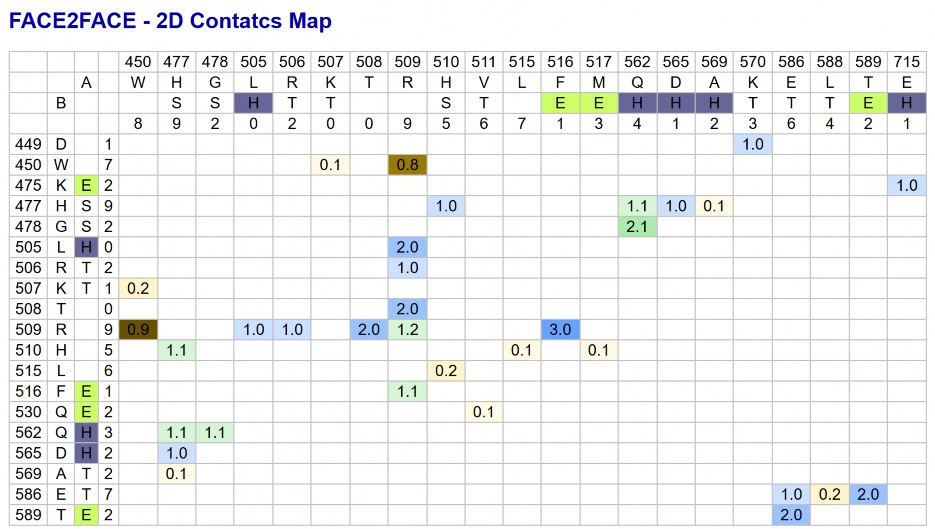
Example of a Contact Map:
First two columns and rows report the numbering and sequence of the two chains
Third column and row show the secondary structure elements form DSSP (Kabsch and Sander, 1983).
Fourth column and row indicate the loss of accessibility for each residues from 0 (low) to 9 (high).
The number inside cells indicate the polar (P) and and non-polar (NP) contacts in the format P.NP.
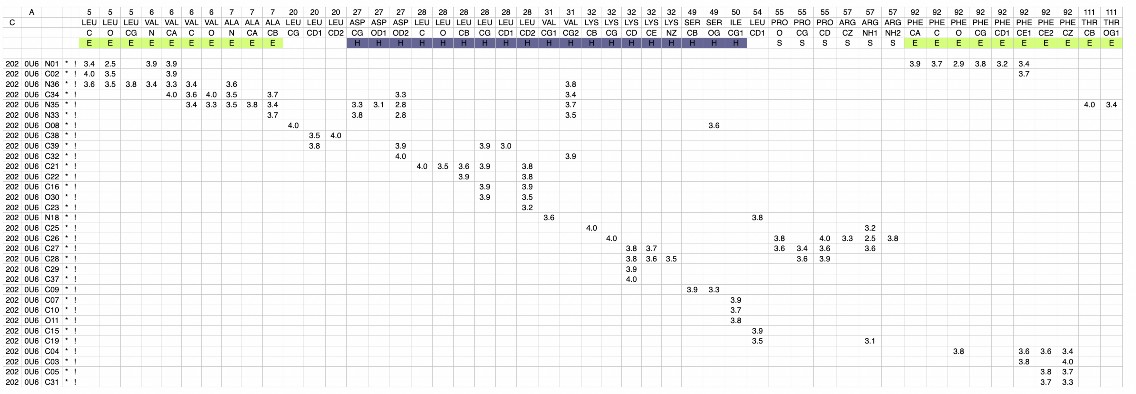
If a ligand is selected, Face2Face calculates the corresponding interface and generates a 2D contact map displaying only distances within the cells.
DSSP and accessibility are not available for the ligands and a warning is displayed in the web shell.
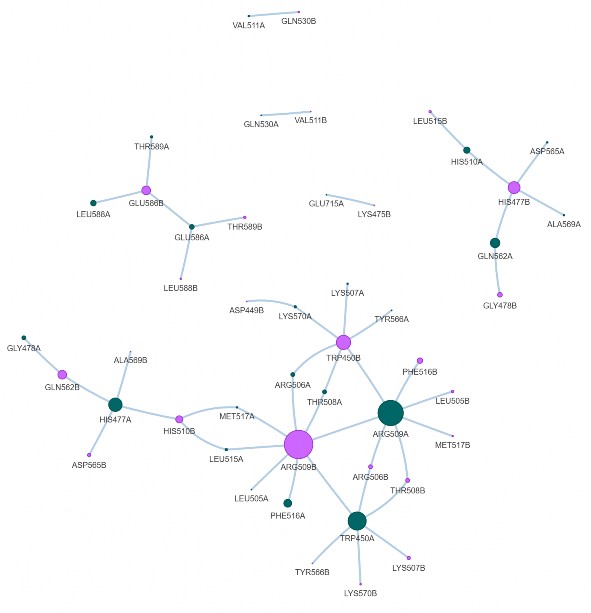
Example of an interface network:
The larger the sphere, the greater the number of contacts for that specific residue.



The NON-POLAR, POLAR, and Other tabs provide a list of the respective specific contact types.

